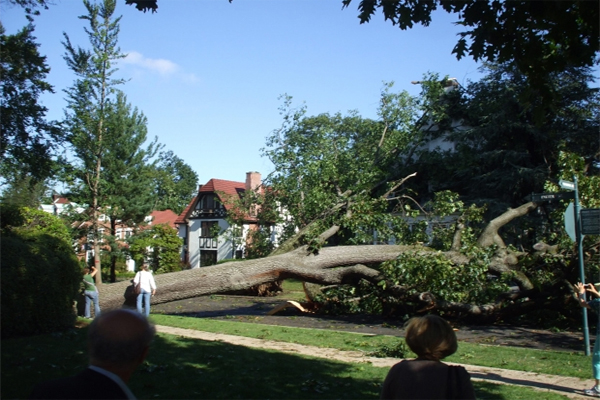During a violent storm, even a healthy tree can be damaged by wind, rain, snow, or hail. And if you’re unlucky enough to have one fall from rough weather, (something we get from time to time around Myrtle Beach) a further complication is that tree professionals will be in demand and slow to arrive after a storm. So here’s how to avoid tree problems before they happen and, if you decide to tackle a fallen tree yourself, how to keep safe:
Give Your Trees a Physical
You can’t identify every potential problem. In the case of a major storm and a super-saturated soil condition, the most stable trees can become unstable—and it’s hard to predict. Other identifiers include hollows or splits, which show weakness, and dead giveaways such as fungal growth and branches without leaves at the time of year they should have them.
It is also advisable to tap the trunk of suspect trees with a rubber mallet (it should not sound like a drum) and look for carpenter ants crawling in and out of a soft spot. Over time, arborists will also measure changes in the way the tree is leaning.
Act Before a Storm Approaches
Not all trees that look troubled need attention, but if you’re concerned and don’t have an arborist, it’s worth your while to get a complete tree inspection, which could range from free to a $150 or so. It’s definitely better to fix the problem before any damage occurs. Many arborists use an International Society of Arboriculture (ISA) score, called a Tree Risk Assessment, by which they judge trees both for their apparent integrity and also for whom and what they could imperil by falling. Dead trees out in the middle of a field might not require attention, but a tree with slight decay in a busy city courtyard might need to be removed. At the end of the day, it becomes a judgment call. Does the homeowner want to take the risk of keeping that tree around?
Don’t Rush DIY Work on Trees
Have a tree down across your driveway? With arborists scarce, you might be tempted to do the job yourself. But we advise you to take it slow:
- Wear the appropriate protection: snug-fitting clothing and sturdy work boots, Kevlar chaps over the legs, protective gloves, a helmet with a face shield, and hearing protection.
- Watch for fallen electrical lines. There won’t be any indications there’s a live wire. You won’t hear things or see smoke, but there’s often electrical current in the ground or entangled in the tree. Always treat any downed line as live and wait for the utility crew’s okay.
- Before cutting trees, examine them for branches under pressure. Rarely does a tree fall flat. When trees comes down in an unnatural position and you start cutting on them, some of these trees can be under tension and could act like a spring and throw wood around—and at you.
- Don’t work alone, even if you only have someone near who can help you quickly in case of an emergency.
Remember, if you have downed trees, or a tree that looks like it needs to come down, Super-Natural Landscaping can assist. Give us a call. 843-246-5598. Or, complete our short form for a free, no-obligation quote on any tree work you need to have done in the Myrtle Beach area. Be sure to check us out on Facebook too!


